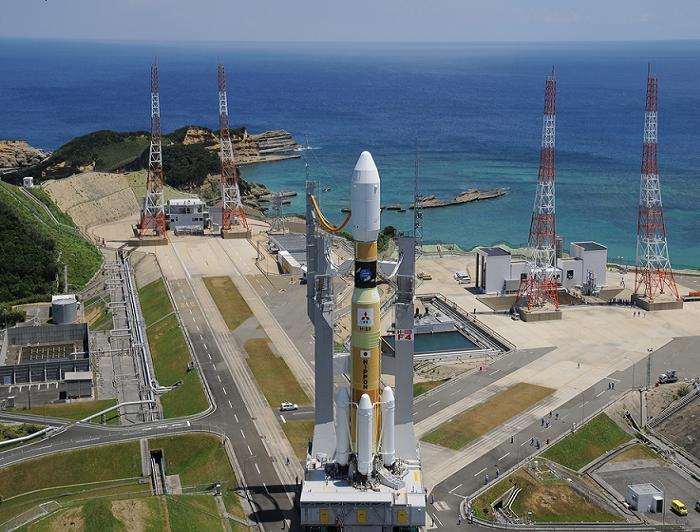Rocket Lunch
Kennedy Space Center - United States of America
The John F. Kennedy Space Center, located on Merritt Island, Florida. Since December 1968, KSC has been NASA's primary launch center of human spaceflight. Launch operations for the Apollo, Skylab and Space Shuttle programs were carried out from Kennedy Space Center Launch Complex 39 and managed by KSC.
It is 34 miles (55 km) long and roughly six miles (9.7 km) wide, covering 219 square miles (570 km2). KSC is a major central Florida tourist destination and is approximately one hour's drive from the Orlando area. The Kennedy Space Center Visitor Complex offers public tours of the center and Cape Canaveral Space Force Station.
Apollo program - From 1967 through 1973, there were 13 Saturn V launches, including the ten remaining Apollo missions after Apollo 7. The first of two uncrewed flights, Apollo 4 (Apollo-Saturn 501) on November 9, 1967, was also the first rocket launch from KSC. The Saturn V's first crewed launch on December 21, 1968, was Apollo 8's lunar orbiting mission. The next two missions tested the Lunar Module: Apollo 9 (Earth orbit) and Apollo 10 (lunar orbit). Apollo 11, launched from Pad A on July 16, 1969, made the first Moon landing on July 20. Apollo 12 followed four months later. From 1970 to 1972, the Apollo program concluded at KSC with the launches of missions 13 through 17.
Skylab - On May 14, 1973, the last Saturn V launch put the Skylab space station in orbit from Pad 39A. By this time, the Cape Kennedy pads 34 and 37 used for the Saturn IB were decommissioned, so Pad 39B was modified to accommodate the Saturn IB, and used to launch three crewed missions to Skylab that year, as well as the final Apollo spacecraft for the Apollo–Soyuz Test Project in 1975.
The Kennedy Space Center Visitor Complex, operated by Delaware North since 1995, has a variety of exhibits, artifacts, displays and attractions on the history and future of human and robotic spaceflight. Bus tours of KSC originate from here. The complex also includes the separate Apollo/Saturn V Center, north of the VAB and the United States Astronaut Hall of Fame, six miles west near Titusville.
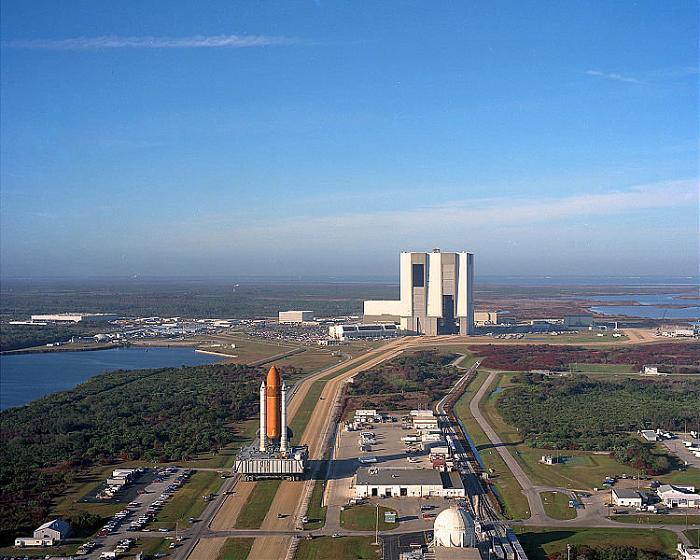
Cape Canaveral Space Force Station - United States of America
Cape Canaveral Space Force Station (CCSFS) is an installation of the United States Space Force's 45th Space Wing, located on Cape Canaveral in Brevard County, Florida. Headquartered at the nearby Patrick Space Force Base, the station is the primary launch head of America's Eastern Range with three launch pads currently active (Space Launch Complexes 37B, 40, and 41). The facility is south-southeast of NASA's Kennedy Space Center on adjacent Merritt Island, with the two linked by bridges and causeways. The Cape Canaveral Air Force Station Skid Strip provides a 10,000-foot (3,000 m) runway close to the launch complexes for military airlift aircraft delivering heavy and outsized payloads to the Cape.
A number of American space exploration pioneers were launched from CCSFS, including the first U.S. Earth satellite in 1958, first U.S. astronaut (1961), first U.S. astronaut in orbit (1962), first two-man U.S. spacecraft (1965), first U.S. unmanned lunar landing (1966), and first three-man U.S. spacecraft (1968). It was also the launch site for all of the first spacecraft to (separately) fly past each of the planets in the Solar System (1962–1977), the first spacecraft to orbit Mars (1971) and roam its surface (1996), the first American spacecraft to orbit and land on Venus (1978), the first spacecraft to orbit Saturn (2004), and to orbit Mercury (2011), and the first spacecraft to leave the Solar System (1977). Portions of the base have been designated a National Historic Landmark for their association with the early years of the American space program.
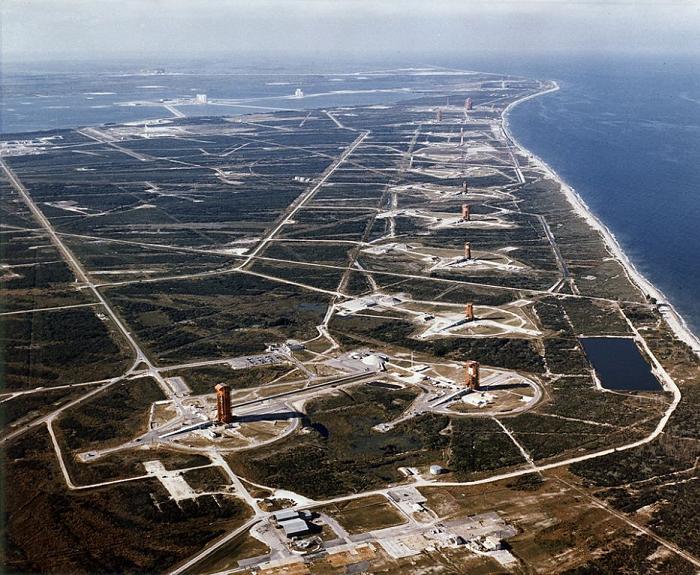
Wallops Flight Facility - United States of America
Wallops Flight Facility is a rocket launch site on Wallops Island on the Eastern Shore of Virginia, United States, just east of the Delmarva Peninsula and approximately 100 miles (160 km) north-northeast of Norfolk. The facility is operated by the Goddard Space Flight Center in Greenbelt, Maryland, and primarily serves to support science and exploration missions for NASA and other Federal agencies. WFF includes an extensively instrumented range to support launches of more than a dozen types of sounding rockets; small expendable suborbital and orbital rockets; high-altitude balloon flights carrying scientific instruments for atmospheric and astronomical research; and, using its Research Airport, flight tests of aeronautical research aircraft, including unmanned aerial vehicles.
There have been over 16,000 launches from the rocket testing range at Wallops since its founding in 1945 in the quest for information on the flight characteristics of airplanes, launch vehicles, and spacecraft, and to increase the knowledge of the Earth's upper atmosphere and the environment of outer space. The launch vehicles vary in size and power from the small Super Loki meteorological rockets to orbital-class vehicles.
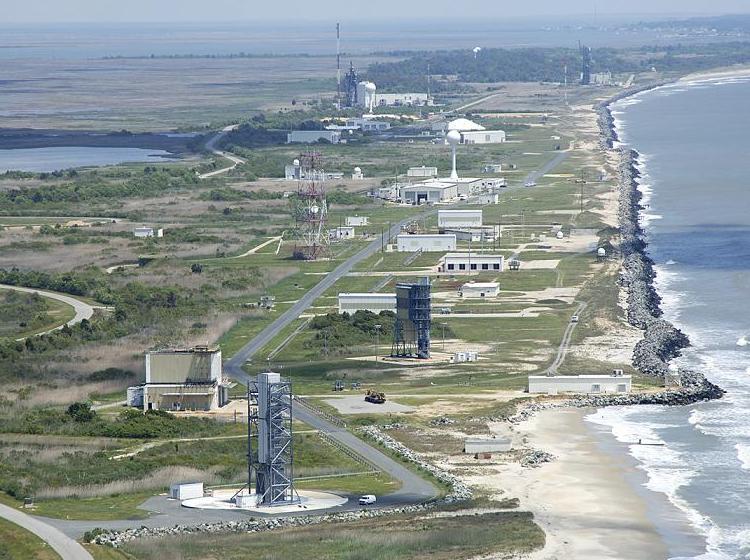
Baikonur Cosmodrome - Russia
The Baikonur Cosmodrome is a spaceport in an area of southern Kazakhstan leased to Russia. The Cosmodrome is the world's first spaceport for orbital and human launches and the largest (in area) operational space launch facility. The spaceport is in the desert steppe of Baikonur, about 200 kilometres east of the Aral Sea and north of the river Syr Darya and is about 90 metres above sea level. Under the current Russian space program, Baikonur remains a busy spaceport, with numerous commercial, military, and scientific missions being launched annually. All crewed Russian spaceflights are launched from Baikonur. Both Sputnik 1, the first artificial satellite, and Vostok 1, the first human spaceflight, were launched from Baikonur. The launch pad used for both missions was renamed Gagarin's Start in honor of Russian Soviet cosmonaut Yuri Gagarin, pilot of Vostok 1 and first human in space.
Baikonur has been a major part of Russia's contribution to the International Space Station (ISS), as it is the only spaceport from which Russian missions to the ISS are launched. It is Baikonur's position at ~46° N latitude that dictates the 51.6° orbital inclination of the ISS – this is the lowest inclination that can be reached directly by Soyuz boosters launched from Baikonur that do not involve flying over China. With the conclusion of NASA's Space Shuttle program in 2011, Baikonur became the sole launch site used for crewed missions to the ISS until the launch of Crew Dragon Demo-2 in 2020.
Baikonur is fully equipped with facilities for launching both crewed and uncrewed spacecraft. It supports several generations of Russian spacecraft: Soyuz, Proton, Tsyklon, Dnepr, Zenit and Buran.
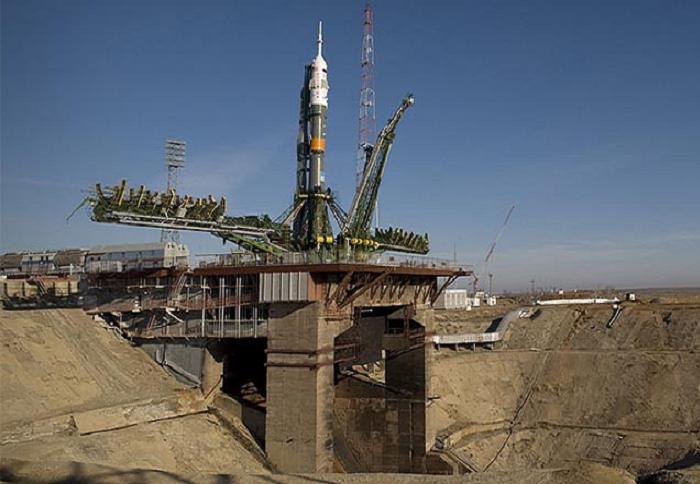
Vostochny Cosmodrome - Russia
The Vostochny Cosmodrome is a Russian spaceport above the 51st parallel north in the Amur Oblast, in the Russian Far East. The cosmodrome's latitude, 51° north, means that rockets will be able to carry almost the same amount of payload as they can when launched from Baikonur at 46°. The first launch at the complex occurred on 28 April 2016, at 02:01 UTC, when a Soyuz-2 launched from pad Site 1S, carrying the gamma-ray astronomy satellite Mikhailo Lomonosov.
According to plans , the Vostochny launch site was to sport a total of seven launch complexes. It could be inferred from the official statements that the "wish list" for the future space center included a launch complex for a "man-rated rocket," with two pads and another facility for a heavy-lifting rocket, to support lunar expeditions.
Cosmodrome enable Russia to launch most missions from its own land, and reduce the dependency of Russia on the Baikonur Cosmodrome which is leased from the government of Kazakhstan. Satellites bound for geostationary orbit and high inclination orbits can be currently launched from Plesetsk Cosmodrome in northwestern Russia. The new site is intended mostly for civilian launches.
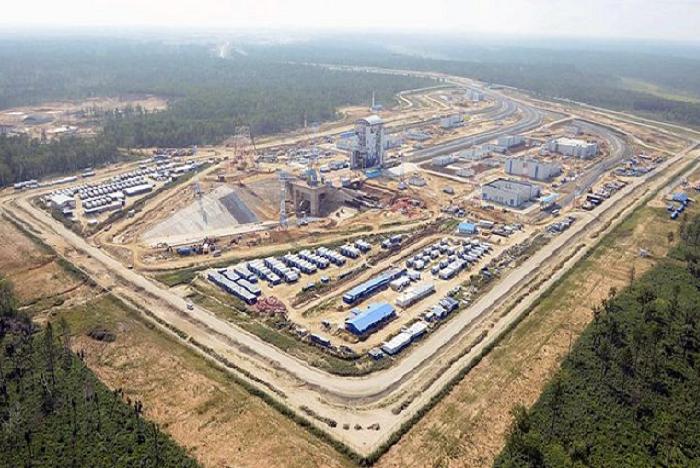
Plesetsk Cosmodrome - Russia
Plesetsk Cosmodrome is a Russian spaceport located in Mirny, Arkhangelsk Oblast, about 800 km north of Moscow and approximately 200 km south of Arkhangelsk, the cosmodrome dates from 1957. Originally developed as an ICBM site for the R-7 missile, it also served for numerous satellite launches using the R-7 and other rockets.
The Soyuz rocket, Cosmos-3M, Rockot, Tsyklon, and Angara are launched from the Plesetsk Cosmodrome. The heavy Proton and Zenit rockets can only be land-launched from Baikonur. The new all-Russian Angara rocket was designed to be launched primarily from Plesetsk (and also eventually from the Vostochny Cosmodrome). Plesetsk was the busiest launch base in the world. Thanks to good initial planning, the cosmodrome is very functional. Plesetsk Cosmodrome is Russia’s largest operational missile testing and space launch facility.
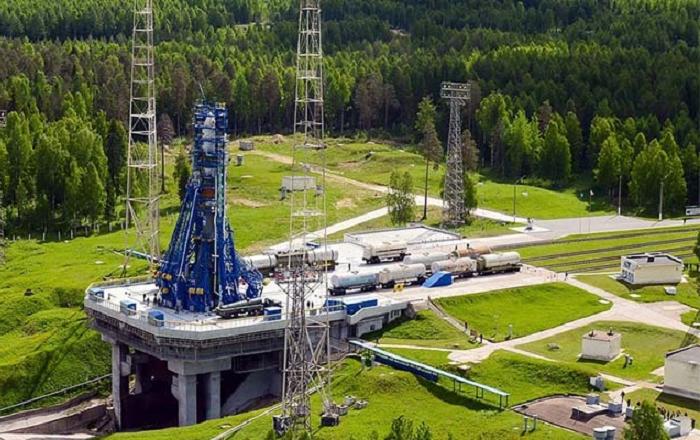
Jiuquan Satellite Launch Center - China
Jiuquan Satellite Launch Center also known as Shuangchengzi Missile Test Center; Launch Complex B2; formally Northwest Comprehensive Missile Testing Facility is a Chinese space vehicle launch facility (spaceport) located in the Gobi Desert, Inner Mongolia. It is part of the Dongfeng Aerospace City. Although the facility is geographically located within Ejin Banner of Inner Mongolia's Alxa League, it is named after the nearest city, Jiuquan in Gansu Province. It is huge - about 2,800 square kilometers -- and the climate means that around 300 days each year are suitable for launches.
It was founded in 1958, the first of China's four spaceports. More Chinese launches have occurred at Jiuquan than anywhere else. As with all Chinese launch facilities, it is remote and generally closed to foreigners.
JSLC is usually used to launch vehicles into lower and medium orbits with large orbital inclination angles, as well as testing medium to long-range missiles. Its facilities are state of the art and provide support to every phase of a satellite launch campaign. The site includes the Technical Center, the Launch Complex, the Launch Control Center, the Mission Command and Control Center and various other logistical support systems.
The launch center has been the focus of many of China's ventures into space, including their first satellite Dong Fang Hong 1 in 1970, and their first crewed space mission Shenzhou 5 on 15 October 2003.
Shenzhou 6, the second crewed spaceflight of China, launched on 12 October 2005 on a Long March rocket from JSLC.
Shenzhou 7, the third crewed spaceflight mission of the Chinese space program, was launched from JSLC on 25 September 2008 by a Long March 2F (CZ-2F) rocket. The mission, which included an extra-vehicular activity (EVA) carried out by crewmembers Zhai Zhigang and Liu Boming, marked the commencement of the second phase of the Chinese government's Project 921.
China's fourth crewed spaceflight, Shenzhou 9, launched from JSLC on 16 June 2012 at 18:37 local time (10:37 UTC). The 13-day mission included China's first female astronaut and docked with the country's Tiangong-1 space station module on Monday, 18 June 2012.
In August 2016, China launched the first quantum communication satellite, the "Quantum Experiments at Space Scale", from the Center.
In August 2018, Chinese private rocket manufacturing startups i-Space and OneSpace launched sub-orbital rockets from the center. On July 25, 2019, the first Chinese private orbital launch took place from Jiuquan as I-Space launched their Hyberbola-1 rocket.
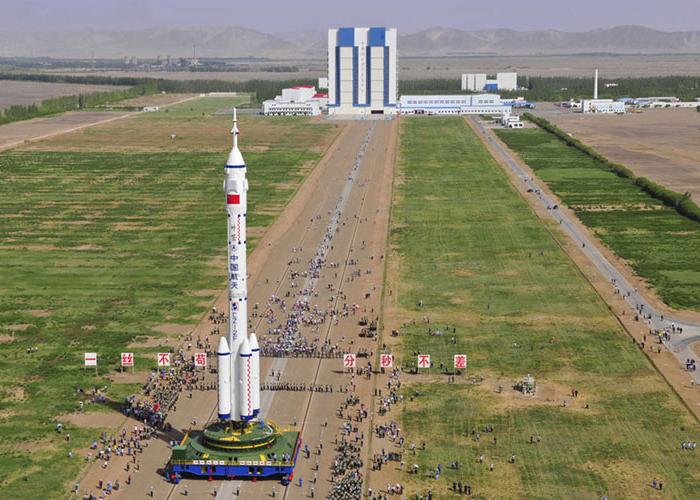
Taiyuan Satellite Launch Center - China
The Taiyuan Satellite Launch Center, situated in Kelan County of north China's Shanxi Province, was founded in March 1966 and came into full operation in 1968.
Surrounded by mountains, Taiyuan stands at an elevation of 1,500 meters. Its dry weather makes it ideal for launching solar-synchronous satellites. It has launched a variety of satellites, including weather, resource and communication satellites into geostationary and other orbits. The site is primarily used to launch meteorological satellites, Earth resource satellites and scientific satellites on Long March launch vehicles into Sun-synchronous orbits.
December 1968: launch of China's first medium-range rocket. By 1988, it had launched more than 70 carrier rockets of different kinds, from medium- to long-range. September 7, 1988: the first Fengyun satellite sent into geostationary orbit, followed by a second on December 3, 1990. The Taiyuan Launching Center also engages in commercial launches for overseas clients. May 15, 2002: launch of HY-1A, China's first marine satellite. September 16, 2003: launch of China's first four-stage solid-fuel carrier rocket "Pioneer I". This rocket can send a variety of small satellites of up to 100-kg into space within 12 hours.
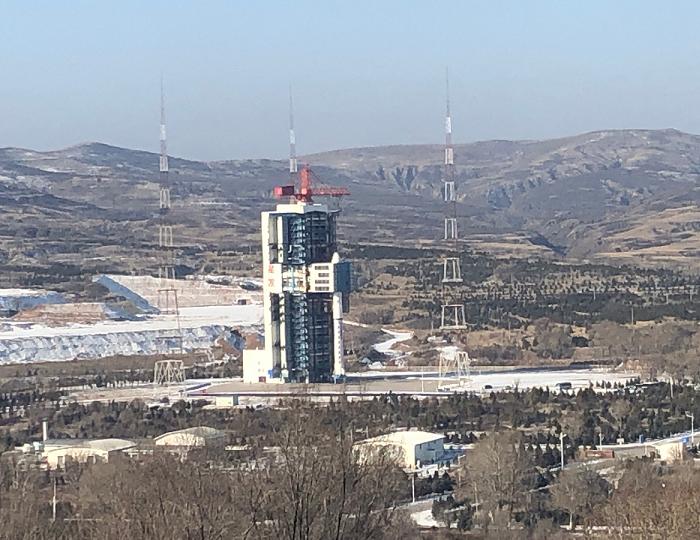
Xichang Satellite Launch Center - China
The Xichang Satellite Launch Center, also known as the Xichang Space Center, is a spaceport of China. It is located in Zeyuan Town, approximately 64 kilometers northwest of Xichang, Liangshan Yi Autonomous Prefecture in Sichuan.
The facility became operational in 1984 and is used to launch numerous civil, scientific, and military payloads annually. It is notable as the site of Sino-European space cooperation, with the launch of the first of two Double Star scientific satellites in December 2003. Chinese officials have indicated interest in conducting additional international satellite launches from XSLC. China launched its first Long March-2E carrier rocket on 16 July 1990, sending into orbit Pakistan's first indigenously developed Badr-1 satellite and HS-601.
2007, Chang'e 1, an un-manned Moon orbiter of the Chang'e program, was successfully launched from the facility, marking the beginning of China's lunar exploration program. China launched its first Long March-3C carrier rocket on April 25, 2008. This was the 105th mission of China's Long March series of rockets, and also the launch of the nation's first data relay satellite Tianlian I.

Wenchang Spacecraft Launch Site - China
The Wenchang Spacecraft Launch Site, located in Wenchang, Hainan, China, is a rocket launch site — one of the two spacecraft launch sites of Xichang Satellite Launch Center (the other site is in Xichang, Sichuan). It is a former suborbital test center. It is China's fourth and southernmost space vehicle launch facility (spaceport). It has been specially selected for its low latitude, which is only 19° north of the equator, which will allow for an increase in payload necessary for launching China's future space station. It is capable of launching the Long March 5, currently the most powerful Chinese rocket.
The construction of the site was completed by October 2014. The first launch took place successfully at 20:00, 25 June 2016. The first launch took place on 3 November 2016. Long March 5 rocket made its maiden flight from the launch site.
A total of three launch pads are planned. One of the launch pads is designed for a CZ-5 service structure and launch gantry. Another launch pad made for the CZ-7 service structure and launch gantry.
The maiden flight of Long March 5B variant took place on 5 May 2020 from Wenchang LC-1.
On 23 July 2020, the fourth flight of Long March 5 put China's first indigenous Mars orbiter/rover Tianwen-1 directly into TMI from Wenchang.
The maiden flight of Long March 8 occurred on 22 December 2020 from Wenchang LC-2.
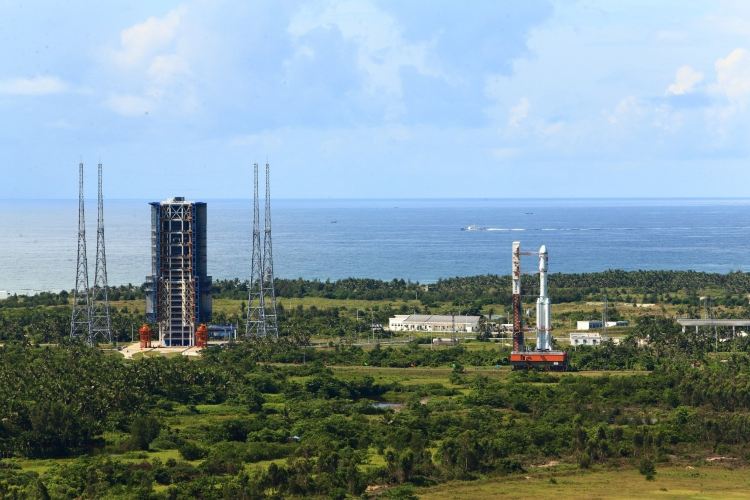
Guiana Space Centre - France and ESA
The Guiana Space Centre or, more commonly, Centre Spatial Guyanais (CSG) is a French and European spaceport to the northwest of Kourou in French Guiana. Operational since 1968, it is particularly suitable as a location for a spaceport as it fulfills the two major geographical requirements of such a site:
- it is near the equator, so that the spinning Earth can impart extra velocity to the rockets for free when launched eastward, and
- it has open sea to the east, so that lower stages of rockets and debris from launch failures cannot fall on human habitations.
The European Space Agency (ESA), the French space agency CNES (National Centre for Space Studies), and the commercial companies Arianespace and Azercosmos conduct launches from Kourou. This was the spaceport used by the ESA to send supplies to the International Space Station using the Automated Transfer Vehicle.
The location was selected in 1964 to become the spaceport of France. In 1975, France offered to share Kourou with ESA. Commercial launches are bought also by non-European companies. ESA pays two thirds of the spaceport's annual budget and has also financed the upgrades made during the development of the Ariane launchers.
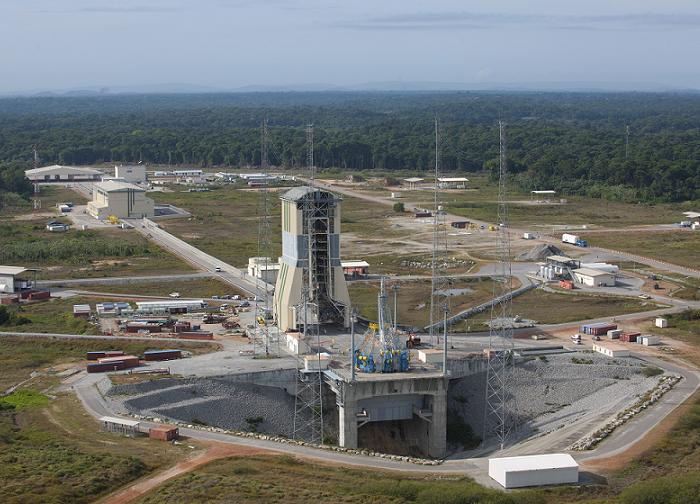
Satish Dhawan Space Centre - India
Satish Dhawan Space Centre is a rocket launch centre (spaceport) operated by Indian Space Research Organisation. It is located in Sriharikota in Andhra Pradesh. Satish Dhawan Space Centre (SHAR) is located in Sriharikota, a spindle-shaped barrier island on the east coast of Andhra Pradesh. Features like a good launch azimuth corridor for various missions, nearness to the equator (benefiting eastward launches), and large uninhabited area for a safety zone make it an ideal spaceport.
Satish Dhawan Space Center to centrum wyrzutni rakiet (port kosmiczny) obsługiwane przez Indyjską Organizację Badań Kosmicznych (ISRO). Znajduje się w Sriharikota w Andhra Pradesh. Sriharikota Range została przemianowana w 2002 roku na cześć byłego przewodniczącego ISRO Satisha Dhawana.
Sriharikota island was chosen in 1969 for a satellite launching station. The centre became operational in 1971 when an RH-125 sounding rocket was launched.
The SHAR facility now consists of two launch pads, with the second built in 2005. The second launch pad was used for launches beginning in 2005 and is a universal launch pad, accommodating all of the launch vehicles used by ISRO. The two launch pads will allow multiple launches in a single year, which was not possible earlier. India's lunar orbiter Chandrayaan-1 launched from the centre at 6:22 AM IST on 22 October 2008. India's first Mars orbiter Mangalyaan was launched from the centre on 5 November 2013, which was successfully placed into Mars orbit on 24 September 2014.
Initially under Indian Human Spaceflight Programme existing launch facilities will be augmented to meet the target of launching a crewed spacecraft called Gaganyaan.
It is India's primary orbital launch site to this day. First flight-test of 'Rohini-125', a small sounding rocket which took place on 9 October 1971 was the first rocket launch from SHAR. Since then technical, logistic and administrative infrastructure have been enhanced. Together with the northerly Balasore Rocket Launching Station, the facilities are operated under the ISRO Range Complex (IREX) headquartered at SHAR.
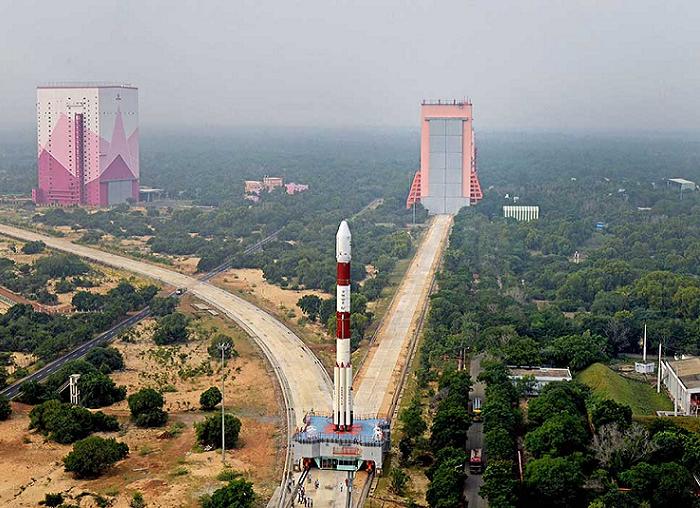
Tanegashima Space Center - Japan
The Tanegashima Space Center is the largest rocket-launch complex in Japan with a total area of about 9.7 square kilometers. It is located on the southeast coast of Tanegashima, an island approximately 40 kilometers south of Kyushu. It was established in 1969 when the National Space Development Agency of Japan (NASDA) was formed, and is now run by JAXA.
The activities that take place at TNSC include assembly, testing, launching, and tracking satellites, as well as rocket engine firing tests.
On-site main facilities include:
- Yoshinobu Launch Complex is a launch site for launch vehicles like the H-IIA
- Vehicle Assembly Building
- Second Spacecraft Test and Assembly Building
- Takesaki Range Control Center
Those facilities are used for performing operations from assembling launch vehicles, maintenance, inspections, final checks of satellites, loading satellites onto launch vehicles, rocket launches, and tracking launch vehicles after liftoff. The TNSC plays a pivotal role in satellite launches among Japan’s space development activities.
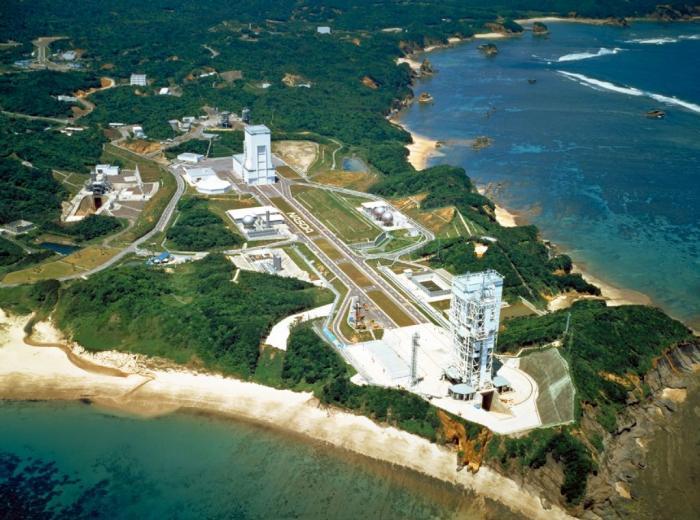
Uchinoura Space Center - Japan
The Uchinoura Space Center is a space launch facility in the Japanese town of Kimotsuki, Kagoshima Prefecture. Before the establishment of the JAXA space agency in 2003, it was simply called the Kagoshima Space Center. All of Japan's scientific satellites were launched from Uchinoura prior to the M-V launch vehicles being decommissioned in 2006. It continues to be used for suborbital launches, and has also been used for the Epsilon orbital launch vehicle. Additionally, the center has antennas for communication with interplanetary space probes.
Established in February 1962, the Kagoshima Space Center was constructed on the Pacific coast of Kagoshima Prefecture in Uchinoura (now part of Kimotsuki) for the purpose of launching large rockets with probe payloads. Prior to establishment of KSC, test launches of the Pencil Rocket, Baby Rocket and Kappa Rocket had been performed at the pioneering Akita rocket test facility (Michikawa) from the mid-1950s to the 1960s. However, progress in rocket development and larger launch vehicles required a site with more expansive down range than the narrow Sea of Japan. After consideration of various candidate sites, Uchinoura in Kagoshima Prefecture, fronting the Pacific Ocean, was selected. At 31° 15' north latitude and 131° 05' east longitude, and situated in hilly terrain, the site at first glance does not appear to be exceptional; however, landscape engineering resulted in a launch facility which maximizes the unique terrain features of the site.
Subsequent to the so-called Baby Rocket, launch vehicles developed by Japan have been given names from the Greek alphabet, i.e. Alpha, Beta, Kappa, Omega, Lambda, and Mu. Although some Greek letters have been skipped due to project termination, the progression to Mu has been one of larger and more sophisticated rockets.
Launch test efforts at KSC with regard to the Kappa, Lambda and Lambda-4 rockets set the stage for small satellite missions. At the same time, the Mu program of large rockets was pursued. After four launch failures, an engineering test satellite was successfully put into orbit aboard a Lambda 4S-5 rocket. The satellite Ohsumi (named after a peninsula in Kagoshima Prefecture) marked Japan's first successful satellite launch. Subsequent improvements in the Mu class rocket enabled scientific satellite launches at a rate of one per year. Development of the new generation M-V rocket resulted in successful launch of the scientific satellite MUSES-B (HALCA) in February 1997.
The first launch of the Epsilon rocket, of a small scientific satellite SPRINT-A, was performed at 14:00 JST, 14 September 2013.
